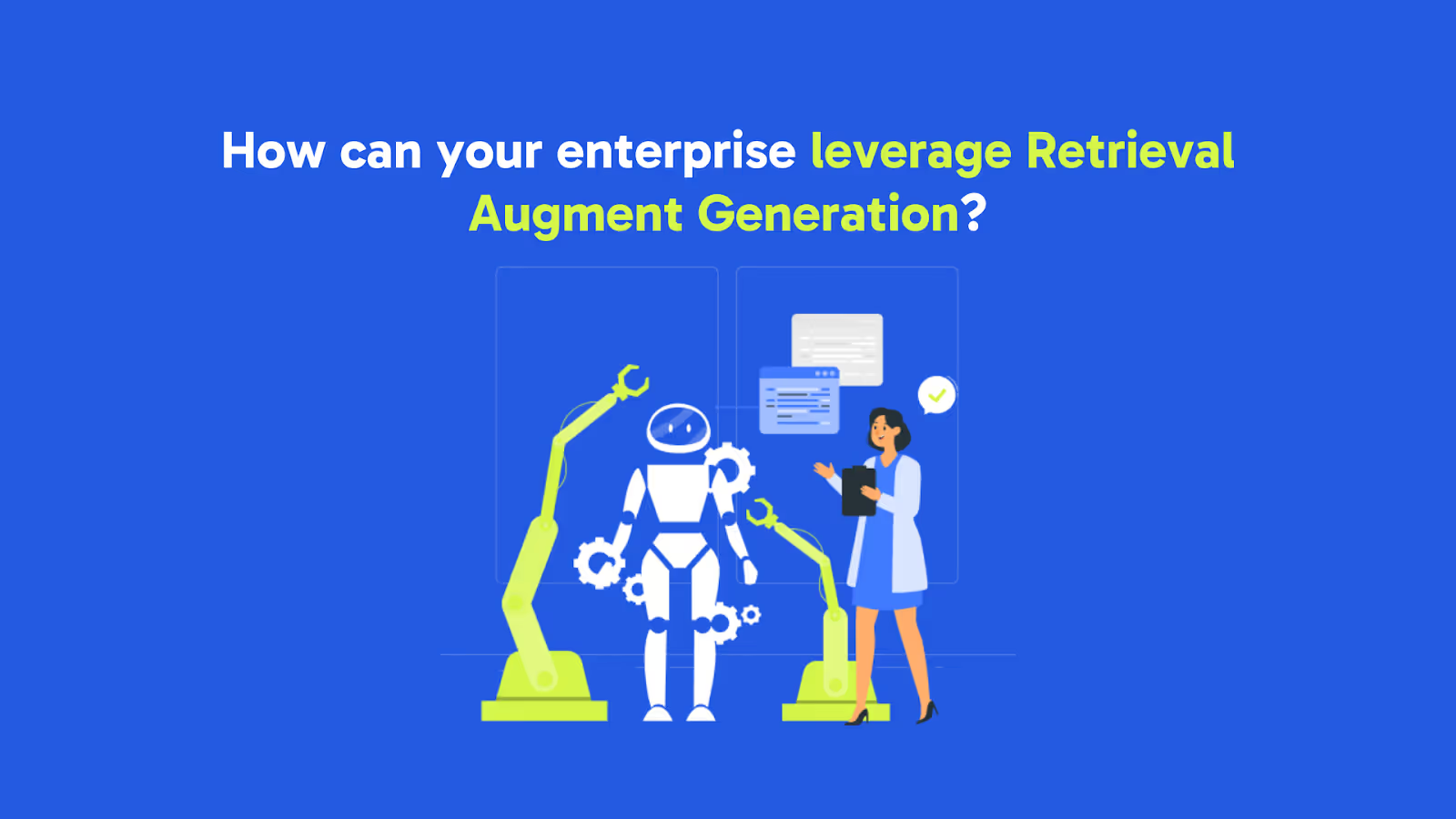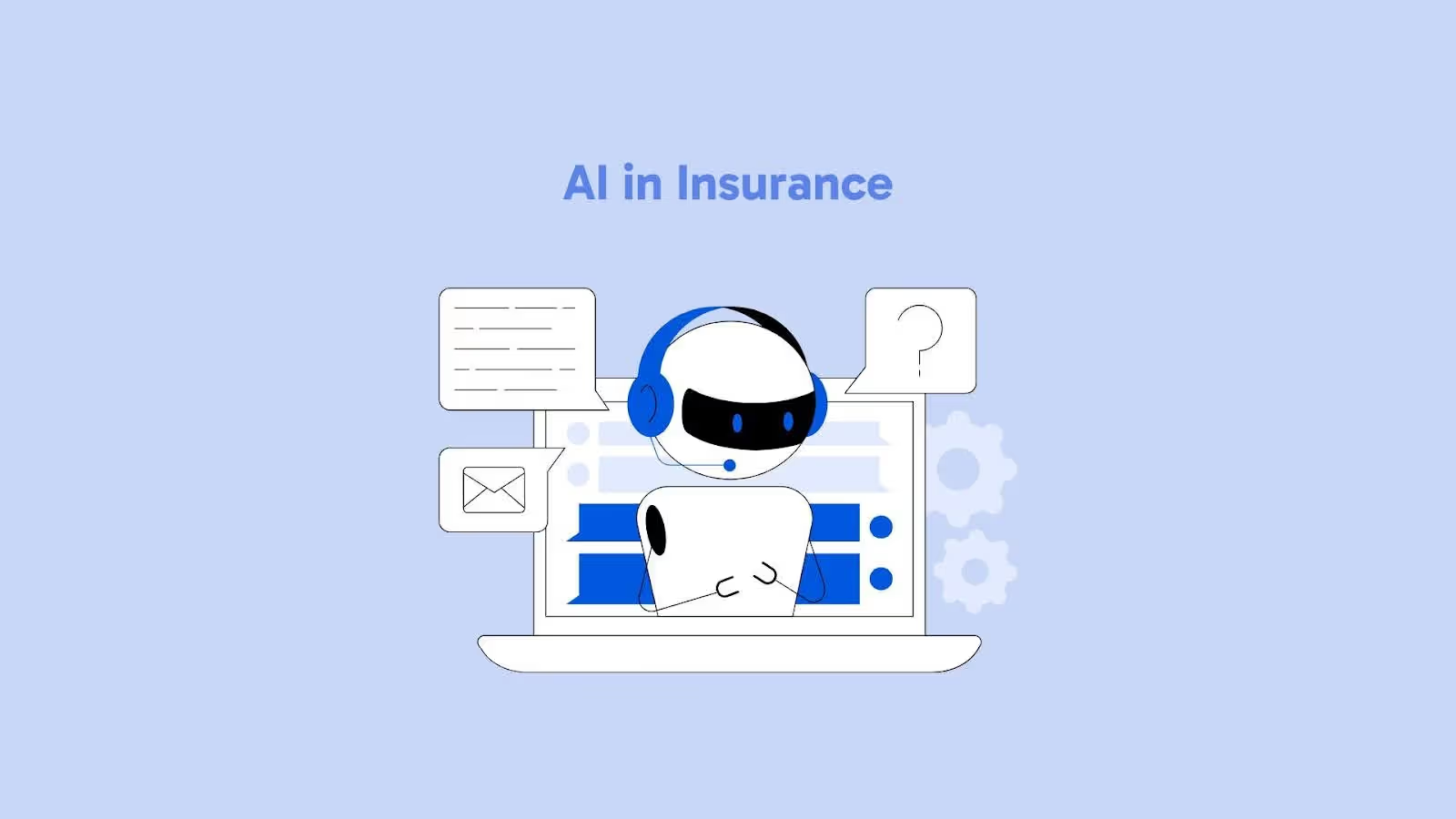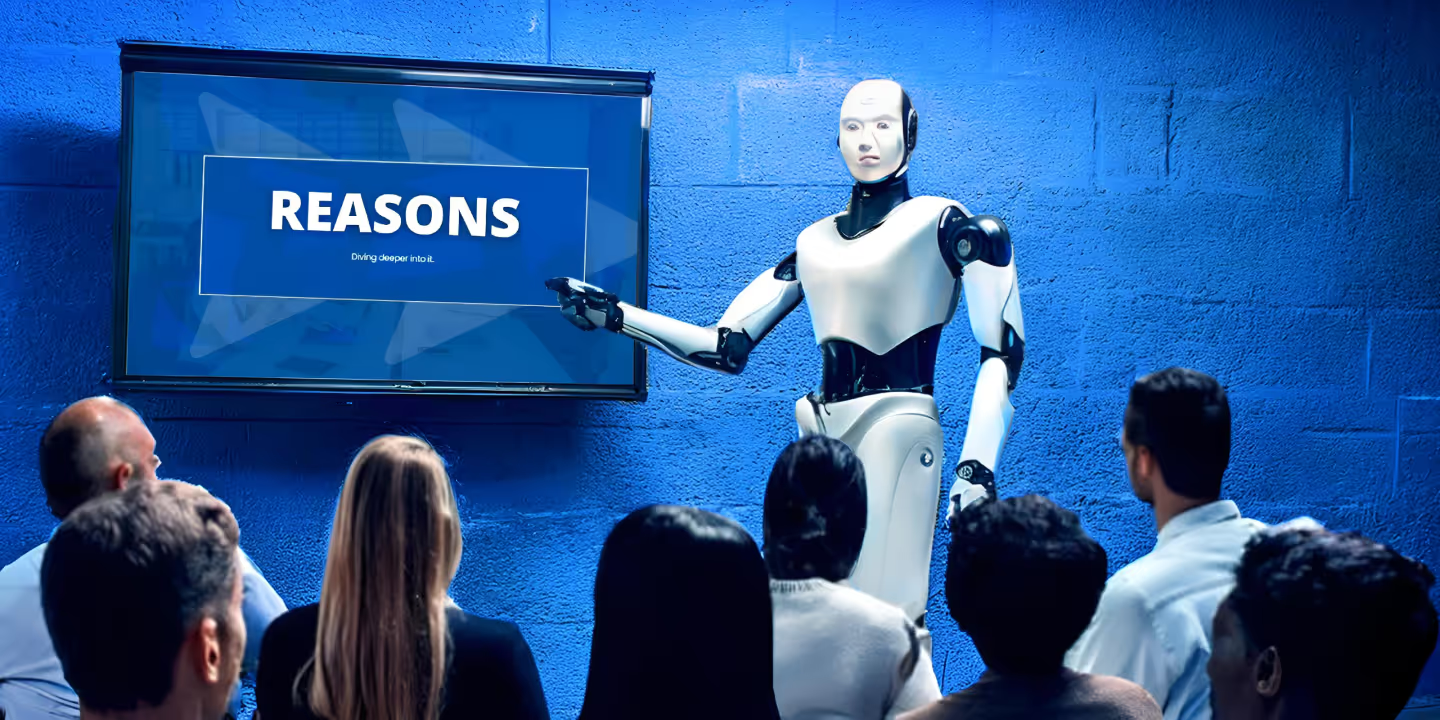Generative AI and Large Language Models (LLMs) are often discussed interchangeably, but they represent distinct concepts within artificial intelligence. While both contribute to creating new content, they operate at different levels.
Generative AI focuses on creating new content in text, images, music, and more. LLMs are a specific type of AI specializing in processing and generating text. LLMs are a subset of GenAI and focus majorly on language-related tasks.
So, basically one is a type of AI focused on content creation while the other is a class of model. That is why they seem incomparable. It's more like comparing apples to oranges — they represent different categories with unique strengths and applications.
But no matter how divergent they sound, they share similarities in the use cases and complement each other as copilots. Maybe that is why there is a need to differentiate generative AI from LLMs properly.
So, let's explore LLM vs generative AI differences and understand what makes them a compatible pair.
Generative AI: Creating New Content
Let’s start by defining both the terms.
Generative AI is an artificial intelligence technology focused on creating models that produce original content in the form of text, images, or music.
A popular example is ChatGPT, a generative AI that creates new human-sounding content.
A GenAI model ingests enormous amounts of training data and employs machine learning algorithms to understand patterns and formulate new output.
Generative AI Scope
Generative AI encompasses a broader scope, this includes:
- Text: LLMs , a part of Gen AI, as discussed, excel in this area, generating text, translating languages, writing different kinds of creative content, and answering your questions in an informative way.
- Images: Models like DALL-E 2, Midjourney, and Stable Diffusion can generate stunning and imaginative images from text descriptions.
- Audio: Models like Jukebox and MusicLM can generate music in various styles.
- Video: While still under development, some models are starting to generate short video clips.
Key examples of Generative AI
- GPT-4 (OpenAI): A powerful and versatile LLM with advanced capabilities in text generation, translation, and code completion.
- Bard (Google): Google's conversational AI chatbot, designed to provide comprehensive and informative responses to a wide range of questions.
- LaMDA (Google): Another Google AI model focused on dialogue applications, aiming to engage in more human-like conversations.
- DALL-E 2 (OpenAI): Creates stunning and imaginative images from text descriptions, demonstrating impressive artistic capabilities.
- Jukebox (OpenAI): Can generate high-fidelity audio samples of music in various genres, demonstrating impressive musical creativity.
- Midjourney: Known for its artistic style and ability to generate highly creative and often surreal images.
LLMs: Improving Contextual Memory
LLM is a type of AI model that uses natural language processing (NLP) to understand and generate humanlike text-based content in response.
Unlike generative AI, which has applications across all creative fields, LLMs specialize in language-related tasks.
LLMs Scope
LLMs, are a subset of Generative AI that specifically focuses on text and language-related tasks. They excel in areas like:
- Natural Language Processing (NLP): Tasks such as text summarization, sentiment analysis, and machine translation.
- Conversational AI: It is a platform that powers chatbots and virtual assistants for customer service, information retrieval, and more.
- Code Generation: Assisting developers with code writing, debugging, and documentation.
Examples of LLM
- GPT-3 (OpenAI): A predecessor of GPT-4, GPT-3 was a groundbreaking LLM that demonstrated impressive capabilities in text generation, translation, and various other NLP tasks.
- GPT-4 (OpenAI): A powerful and versatile LLM with advanced capabilities in text generation, translation, and code completion.
- PaLM 2 (Google): A powerful and versatile LLM from Google, known for its strong coding abilities and multilingual capabilities.
Further read: What is a Large Language Model ?
Generative AI vs LLMs: Technological Foundation
Both generative AI and LLMs have core technologies that shape their capabilities and ultimately influence the outputs they produce.
Generative AI Technologies
- GANs (Generative Adversarial Networks): These consist of two neural networks: a generator that creates synthetic data (like images or music) and a discriminator that differentiates between real and generated data. This adversarial process makes the generator produce increasingly realistic outputs.
- Impact on Output: GANs excel at generating high-fidelity, diverse outputs, often with surprising creativity. However, they can be challenging to train and may sometimes produce unstable or unpredictable results.
- VAEs (Variational Autoencoders): These models learn a compressed representation of the input data and then generate new data by sampling from this compressed space.
- Impact on Output: VAEs tend to produce more coherent and interpretable outputs than GANs but may have limitations in generating highly diverse or novel content.
LLM Technologies
- Transformer Models: Transformers are the foundation of most advanced LLMs. They utilize self-attention mechanisms to weigh the importance of different parts of the input sequence when processing information.
- Impact on Output: Transformer-based models, like LLMs, demonstrate impressive capabilities in generating human-like text, translating languages, and understanding nuanced language.
- Self-Attention Mechanisms: This key component allows the model to focus on different parts of the input sequence dynamically, enabling it to capture complex relationships and dependencies between words.
- Impact on Output: Self-attention mechanisms enable LLMs to understand and generate human language more effectively. It also allows LLMs to capture long-range dependencies in text, leading to more coherent and contextually relevant outputs.
Key Takeaway: Generative AI encompasses a broader range of techniques, including GANs and VAEs. LLMs primarily rely on transformer architectures and self-attention mechanisms to excel in language-related tasks.
Generative AI vs LLMs: Applications and Use-Cases
Apart from the well-known examples, let's have a look at some real-world applications of genAI and LLM:
Generative AI Applications
1. Advertising & Marketing
Marketers are using Gen AI to create targeted ads, personalized product recommendations, and crafting compelling marketing copy tailored to specific customer segments. Gen AI also assists in creating engaging social media posts, blog articles, and email campaigns.
Starbucks has implemented AI to automate manual tasks and let employees focus on customer service.
2. Manufacturing
In the field of manufacturing, AI is helping in optimizing existing designs, and predicting product performance. It also improves the supply chain by predicting demand, optimizing inventory levels, and improving logistics.
Nike uses AI to design lighter and more sturdy footwear.
3. Software Development
Generative AI assists developers in writing code, debugging existing code, and generating code documentation.
AI also assists with software testing and identifying potential bugs.
Microsoft Copilot helps in code generation and speeds up the entire software development process.
4. Financial Services
Generative AI is primarily used in finance to identify and prevent fraudulent transactions.
Other than this, it also assists in assessing credit risk and investment risk. Morgan Stanley integrated AI to facilitate quick access to research and financial advisors.
LLMs Applications
1. Customer Support & Virtual Assistants
LLMs are majorly beneficial for customer services, particularly when it comes to chatbots and virtual assistance. It Assisting users with tasks such as scheduling appointments, setting reminders, and finding information.
Siri, Alexa, and Google Assistant are popular virtual assistants using LLMs to understand and react to human voice interactions.
2. Content Creation & Writing Assistance
LLMs are very helpful in content creation. They assist content writers in brainstorming ideas for blog posts. They are very helpful in providing suggestions for improving grammar, style, and clarity.
Marketers use LLMs like GPT-4 to quickly generate product descriptions and social media posts.
3. Language Translation
Services like Google Translate use LLMs to provide word-to-word translation by taking the context and meaning of sentences into account. Apart from this, it also facilitates communication and collaboration across different languages.
4. Healthcare Applications
In healthcare, LLMs assist with tasks such as scheduling appointments, answering patient questions, and providing basic health information. They also analyze medical literature, identify potential drug candidates, and assist in drug discovery.
Key Takeaway: Generative AI finds broad application across sectors like marketing, manufacturing, and finance, revolutionizing tasks like personalized marketing, product design, and fraud detection. LLMs, a subset of Generative AI, excel in language-related tasks, impacting customer service, content creation, and healthcare through applications like chatbots, writing assistance, and medical research support.
Generative AI vs LLMs: Ethical and Practical Challenges
Now, let’s explore the ethical and practical challenges associated with both generative AI and LLMs.
Generative AI
- Deepfakes: The ability to create highly realistic but fabricated images, videos, and audio can be misused to spread misinformation, manipulate public opinion, and damage reputations.
- Data Bias: Generative AI models are trained on massive datasets that may reflect and accelerate existing societal biases, leading to discriminatory outputs and perpetuating harmful stereotypes.
- Job Displacement: The automation of tasks traditionally performed by humans, such as content creation and design, raises concerns about job displacement and the impact on the workforce.
Large Language Models (LLMs)
- Misinformation: LLMs can generate convincing but inaccurate or misleading information, contributing to the spread of misinformation and "fake news."
- Data Bias: Similar to Generative AI, LLMs can reflect and amplify biases present in the data they are trained on, leading to biased outputs and discriminatory outcomes.
- Academic Dishonesty: The ability of LLMs to generate human-like text raises concerns about academic integrity, as students may use them to cheat on assignments or plagiarize work.
Key Takeaway: Both Generative AI and LLMs present significant ethical and practical challenges that require careful consideration and proactive mitigation strategies. Addressing these challenges is crucial for ensuring the responsible and beneficial development and deployment of these powerful technologies.
Here’s a brief summary of the main differences between generative AI and LLMs
3 Facts About Generative AI vs. LLMs
There are three major things that we must point out while comparing generative AI and LLMs.
1. Not All Gen AI Tools are Built on LLMs, But All LLMs are a Form of Generative AI
Generative AI is an umbrella term encompassing any AI system capable of creating new content. This includes LLMs, which specifically focus on generating text, translating languages, writing different kinds of creative content, and answering your questions in an informative way.
LLMs are a subset within the larger category of Generative AI. They are specialized for tasks involving language and text.
Think of it this way: Generative AI is like the entire concept of "vehicles." It includes cars, trucks, motorcycles, aeroplanes, etc.
LLMs are like "cars" within that larger category. They are a specific type of vehicle designed for a particular purpose.
2. LLMs Create Text-Only Outputs
The core function of LLMs is to generate text, but this doesn’t limit their impact.
LLMs primarily focus on text-based outputs, but their ability to understand and generate human language makes them a fundamental component of many broader Generative AI applications.
They play a crucial role in enabling other forms of Generative AI. For example:
LLMs can provide the textual descriptions that guide image generation models like DALL-E 2 and Midjourney.
LLMs can be used to control other AI systems, such as robots or drones, through natural language commands.
3. LLMs and Generative AI Tools are Only Growing
Research in both LLMs and broader Generative AI is progressing at an unprecedented pace.
We are constantly seeing new capabilities emerge, such as:
- LLMs are becoming more powerful, with larger model sizes and more sophisticated architectures.
- LLMs are being extended to handle multiple modalities, such as images and audio, blurring the lines between different types of Generative AI.
- Open-source models and cloud-based platforms are making these technologies more accessible to a wider range of developers and researchers.
The market for Generative AI tools is expanding rapidly, with new applications emerging constantly. This growth is fueled by increased investment, growing user adoption, and continuous innovation.
Generative AI vs LLM: Which One is Better?
While comparing generative AI and LLM, it’s not really a question of which is better because of their overlapping roles. Instead, the question will be which best suits your needs.
So, if you deal only with text in your organization, like writing blogs, brochures, technical manuals, and ad posts, then LLMs are the right choice for you.
However, if your work roles involve generating projects that include creative videos, social media carousels, bid videos, and web banners, then the genAI solution is better for you.
But even if you now know which technology works better for you, there’s still one question that lingers: “How do I implement it?”
At Nurix, we understand that implementing generative AI and large language models requires both a strategic approach and expert skill sets, which can make AI-based projects challenging to develop and integrate for businesses on their own.
That is where our expertise comes in. Nurix is an expert in developing AI-based platforms and solutions for businesses across all domains. We help you choose and deploy the right technology quickly and easily by understanding your requirements.
Co-build your AI product with Nurix.
To learn more about how our experienced AI experts can help you achieve your business goals, Contact us today!

.avif)








